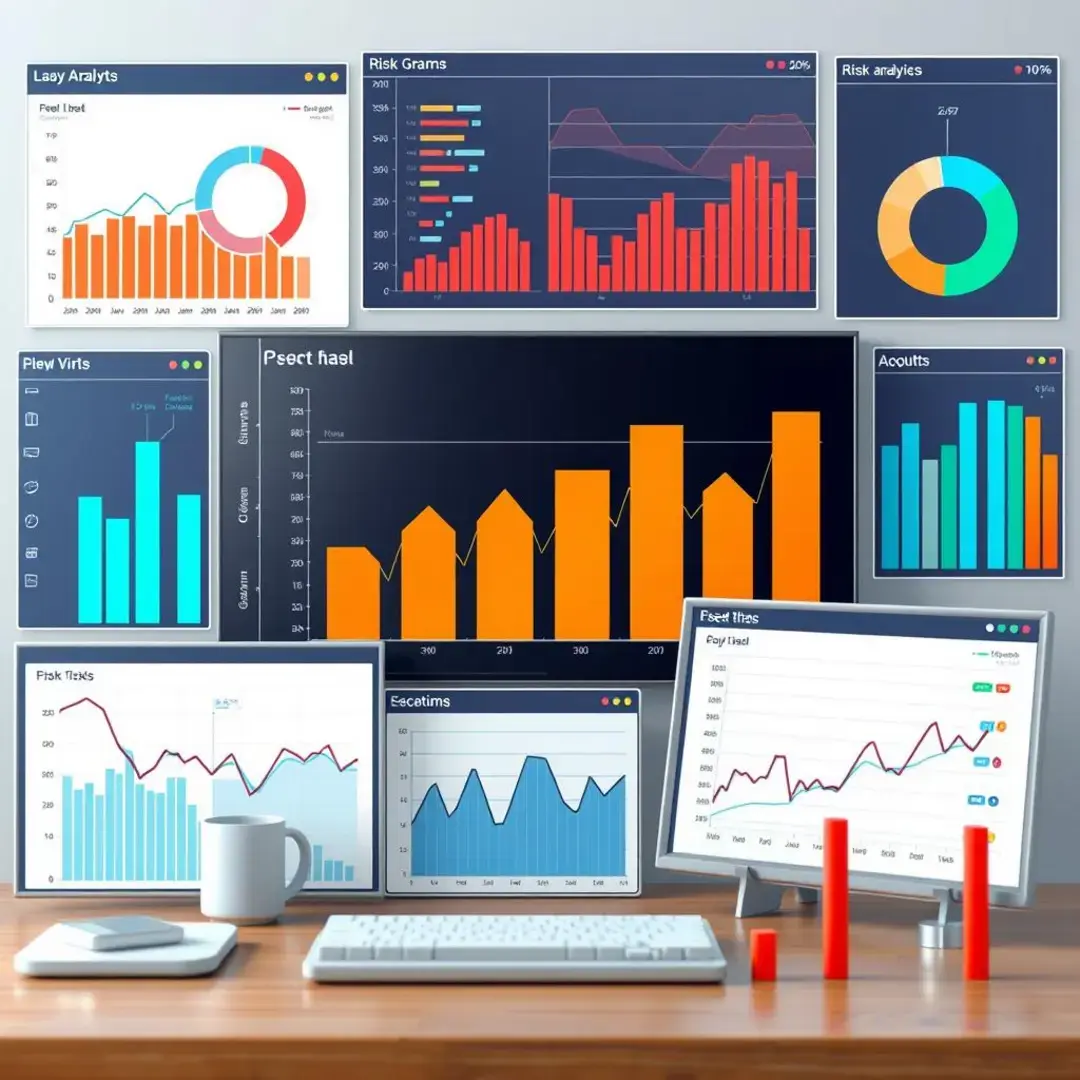What are Risk Assessment Tools?
Defining Risk Assessment Tools

Risk assessment tools are essential instruments used to identify, evaluate, and manage potential risks that may affect an organization. These tools assist in systematically analyzing risk factors, which helps businesses make informed decisions. By employing these tools, companies can not only identify vulnerabilities but also assess the likelihood of these risks occurring. Ultimately, an effective risk assessment tool can enhance an organization’s capability to mitigate and manage risks proactively.
Core functionalities of risk assessment tools
One of the primary functionalities of risk assessment tools is their ability to gather and analyze data from various sources. This data input component is critical because it allows organizations to create a comprehensive overview of potential risk factors. The analysis part transforms raw data into meaningful information that can drive decision-making processes. Typically, these tools aggregate data from previous incidents, expert opinions, and industry reports to provide a broad perspective on risks.
After data analysis, risk assessment tools proceed to calculate and score risks based on various criteria. This method typically involves quantifying the impact and likelihood of each identified risk, allowing decision-makers to prioritize their responses. The scoring system categorizes risks, enabling organizations to focus on the most significant threats to their operations. A clear understanding of risk scores helps in allocating resources and developing mitigation strategies effectively.
The final core function of risk assessment tools involves generating reports and visualizations that summarize the findings of the risk analysis. This feature is vital for communicating risks to stakeholders at all levels within an organization. Visual representations, such as heat maps or risk matrices, can effectively convey complex information in an accessible format. Reporting creates a paper trail that can be invaluable for audits and compliance assessments.
Types of risk assessment tools
Qualitative risk assessment tools focus on subjective data and insights gathered from experts. These tools often explore the significance of risks without relying on numerical data. They serve as a means of understanding potential risks through methods like brainstorming sessions, interviews, and focus groups. By engaging stakeholders in the risk identification process, qualitative tools can uncover nuanced insights that numbers alone might miss.
Strengths and weaknesses of qualitative tools
One major strength of qualitative tools is their flexibility; they can adapt to various contexts and provide rich, detailed input. However, their inherent subjectivity can lead to inconsistencies in risk assessments. This variability may result in less reliable outcomes than those derived from quantitative methods. Ultimately, the fundamental challenges involve balancing insights with the need for objectivity.
Examples of qualitative tools
-
- SWOT Analysis
- Expert Judgment
- Brainstorming Sessions
In contrast, quantitative risk assessment tools are based on numerical data and statistical analysis. These tools typically utilize mathematical models and algorithms to assess risks, offering a more objective evaluation. By applying this method, organizations can produce clear, measurable outcomes that help drive decision-making. Consequently, quantitative risk assessments can bring a level of rigor and precision that qualitative methods may lack.
Strengths and weaknesses of quantitative tools
The key advantage of quantitative tools lies in their ability to provide objective data, which can facilitate better strategic decision-making. On the downside, these tools often require significant data collection and may not account for the complexity and unpredictability of certain risks. Therefore, organizations must weigh their data capabilities against the benefits of precise quantitative analyses.
Examples of quantitative tools
-
-
- Monte Carlo Simulation
- Factor Analysis
- Decision Tree Analysis
-
Hybrid risk assessment tools combine both qualitative and quantitative approaches to create a more comprehensive assessment. By leveraging the strengths of both methods, these tools offer a balanced perspective that can lead to more robust conclusions. Such a combination can enhance risk identification and scoring while mitigating the limitations associated with relying solely on one approach. This versatility is especially advantageous in dynamic environments where different risk factors may be at play.
Benefits of combining qualitative and quantitative approaches
The central benefit of hybrid tools is the enriched analysis that results from their multifaceted perspective. Organizations can capture the depth of qualitative insights alongside the quantitative rigor essential for data-driven decisions. This integrated approach ultimately fosters a more nuanced understanding of risks that can be critical in strategic planning.
Examples of hybrid tools
-
-
- Risk Assessment Framework (RARF)
- Enterprise Risk Management (ERM) Software
- Integrated Risk Management Platforms
-
Advanced Applications of Risk Assessment Tools

Integrating risk assessment tools with other systems
Governance, risk management, and compliance (GRC) platforms offer robust frameworks for integrating risk assessment tools. By aligning risk assessments with organizational governance and compliance protocols, companies can streamline their overall risk management strategy. This integration allows for real-time updates, ensuring that risk assessments reflect the current organizational landscape. Moreover, it promotes a culture of risk awareness across the organization.
Linking risk assessment tools with project management software can enhance visibility regarding project-specific risks. This connection enables project managers to utilize risk data within their planning and execution processes effectively. By having risk assessment readily accessible in their workflow, project teams can proactively address risks that may threaten project objectives. Consequently, this integration supports better project outcomes and enhances overall project management efficiency.
Integrating risk assessment tools with threat intelligence feeds provides organizations with timely and relevant risk data. By leveraging external threat information, companies can adjust their risk assessment processes to account for emerging threats. This real-time approach enables organizations to be proactive rather than reactive, allowing them to respond to risks that could have critical impacts. Maintaining an up-to-date awareness of potential threats enhances an organization’s defensive posture against unforeseen challenges.
Automating risk assessments
Automating risk assessments can significantly enhance the efficiency and consistency of the risk management process. By reducing human intervention, organizations can minimize biases and errors that commonly occur in manual assessments. Furthermore, automation allows for quicker updates to risk assessments, ensuring that information is always current and relevant. The culmination of these benefits leads to more accurate and timely decision-making.
Despite its benefits, automation comes with its own set of challenges. Organizations must grapple with the complexities of implementing automated systems, particularly concerning data integration and system compatibility. Additionally, the sophisticated nature of risk assessment algorithms can pose challenges in terms of transparency and interpretability. Without proper understanding and oversight, there is a risk of misinterpreting automated outcomes.
To maximize the efficacy of automated risk assessments, organizations should adhere to best practices such as ensuring robust data integrity and providing employee training. Transparency should be prioritized to help stakeholders understand the methodology behind automated assessments. Regular evaluations of the automated processes can identify areas for improvement, leading to continuous enhancement of risk assessment practices.
Using risk assessment tools for strategic decision-making
Risk assessment tools play a critical role in scenario planning, allowing organizations to consider various future scenarios influenced by different risks. By evaluating potential outcomes, businesses can craft informed strategies that account for uncertainties. This proactive approach to risk management fosters resilience, enabling organizations to withstand unexpected disruptions. Ultimately, scenario analysis serves as a guide for strategic decision-making amid volatility.
Having a clear understanding of an organization’s risk appetite and tolerance is vital for effective risk management. Risk assessment tools can help define these parameters by providing a structured framework for evaluating risks. This understanding enables organizations to make choices that align with their risk profiles, ensuring that strategic objectives are pursued within acceptable risk boundaries. Balancing risk-taking with caution is essential for sustainable growth.
Risk assessment tools are significantly beneficial for portfolio risk management, allowing organizations to manage multiple risks across diverse assets or projects. By effectively assessing the interplay of risks, businesses can optimize choices regarding investments and resource allocation. This form of management enhances organizational agility and responsiveness, promoting stability in the face of market fluctuations. Through thoughtful evaluation of portfolio risks, organizations can cultivate a resilient framework for growth.
Choosing the Right Risk Assessment Tool

Key considerations for selection
Selecting an appropriate risk assessment tool begins with understanding specific industry requirements. Different sectors have unique compliance and regulatory standards that tools must accommodate. By focusing on these requirements, organizations can identify tools that fit their operational needs and risk profiles. Tailored solutions ensure that risk assessments are relevant and effective within the given context.
The maturity level of an organization plays a significant role in tool selection. Emerging companies may require simpler, more flexible tools, while established organizations might benefit from more complex systems equipped for detailed analysis. Understanding current capabilities is crucial in selecting a tool that aligns with the user’s experience and expertise. A mismatch in tool complexity and maturity can lead to underutilization or ineffective risk management practices.
Integration capabilities are another vital consideration when choosing a risk assessment tool. A tool’s ability to seamlessly connect with existing systems can enhance its functionality and value. Organizations should look for tools that can easily interface with other software solutions used in their operations, such as finance, project management, or compliance systems. This interconnectedness fosters comprehensive risk management activities and enhances overall operational effectiveness.
Evaluating different vendors and solutions
When evaluating vendors and risk assessment solutions, organizations should consider essential features that align with their needs. Comparing different products based on functionality, ease of use, and scalability helps narrow down options. Additionally, pricing structures should be analyzed to ensure they fit within budget constraints without sacrificing valuable functionalities. Making informed comparisons facilitates a more effective procurement process.
Vendor support and expertise can significantly influence the success of implementing risk assessment tools. A vendor with a proven track record in the industry can provide valuable insights and guidance during the implementation process. Organizations should assess the level of support offered, including training, technical assistance, and updates. Understanding a vendor’s responsiveness and expertise ensures robust support throughout the tool’s lifecycle.
Conducting proof-of-concept trials allows organizations to test risk assessment tools in real-world scenarios before committing to a purchase. These trials facilitate practical evaluations of a tool’s functionality, ease of use, and applicability to the organization’s specific needs. This hands-on experience can provide stakeholders with beneficial insights into how well the tool meets their risk management requirements. Ultimately, proof-of-concept trials serve as a safety net in the decision-making process.
Future Trends in Risk Assessment Tools

AI and machine learning in risk assessment
The incorporation of AI and machine learning into risk assessment tools is paving the way for predictive risk modeling. This advanced technology can analyze vast datasets to identify potential risks and predict their likelihood of occurrence. Through pattern recognition and data analysis, organizations can make more informed, proactive decisions. Predictive models enhance the overall capability of risk assessment tools, allowing for agile responses to emerging threats.
Automated threat detection systems powered by AI are reshaping the landscape of risk management. These systems can analyze real-time data to identify anomalies that may indicate potential risks. The ability to detect these threats automatically enables organizations to respond swiftly, thus minimizing damage. As threats become increasingly sophisticated, automated detection will be essential in maintaining robust risk management strategies.
Cloud-based risk assessment platforms
Cloud-based risk assessment platforms offer scalability and accessibility that traditional software solutions often lack. These platforms can adapt easily to varying organizational needs, allowing for easy updates and enhancements without significant investment. Access to risk assessment tools via the cloud also facilitates collaboration among remote teams, enhancing communication regarding risks. This accessibility is increasingly crucial as organizations embrace remote work environments.
While cloud-based platforms present several advantages, security and compliance considerations cannot be overlooked. Organizations must ensure that data transmission and storage within cloud environments adhere to regulatory standards. Comprehensive security measures, including encryption and access controls, are vital to protect sensitive information. Maintaining compliance while leveraging cloud technologies strengthens overall risk management practices.
The evolving role of the risk manager
The role of risk managers is evolving, with technology becoming essential in driving insights. By utilizing advanced tools and analytics, risk managers can derive richer insights that inform decision-making. This technology-driven approach enables risk managers to focus on strategic aspects of risk management rather than spending time on manual assessments. The shift enhances their ability to contribute to overall organizational resilience.
As the business landscape continues to evolve, risk managers are increasingly focusing on strategic risk management. This approach requires a holistic view of risks across the entire organization, rather than siloed assessments. By aligning risk management with strategic goals, organizations can better navigate uncertainties and capitalize on opportunities. Emphasizing strategic risk management positions risk managers as integral components of business strategy.












